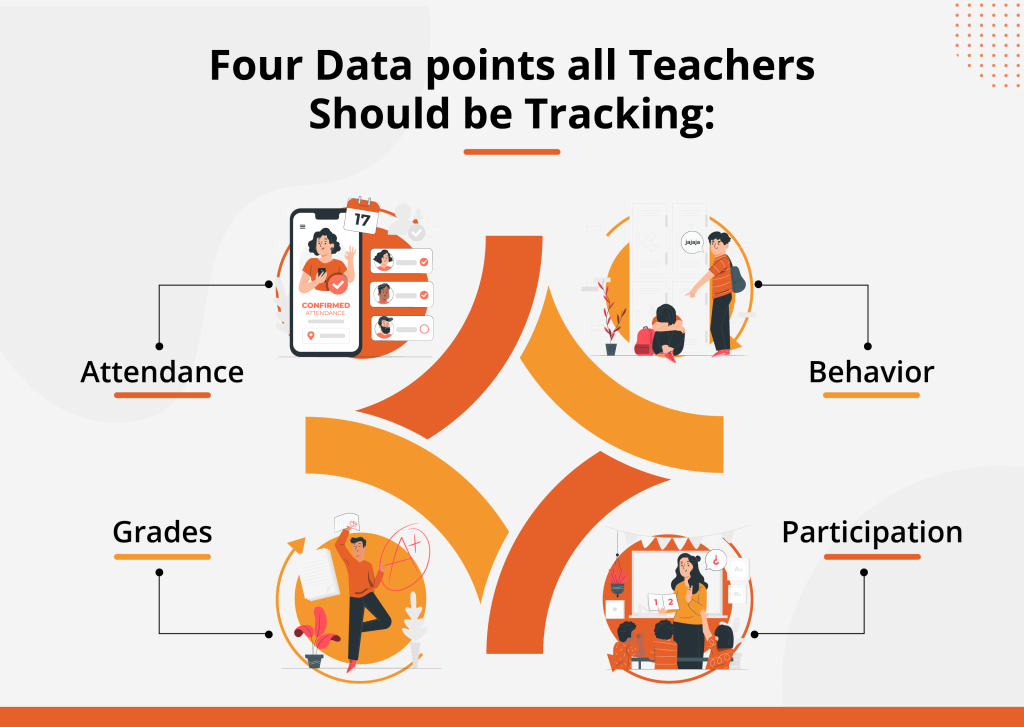The Ultimate Guide to Tracking Student Progress: Best Practices for Teachers

Are your students getting the grades they deserve? As a teacher, one of the most important aspects of your job is to track student progress in order to ensure that every student reaches their full potential. It helps you understand the strengths and weaknesses of each student, identify areas where they need more assistance, and make data-driven decisions about how to teach effectively. But with so much data to collect and analyze, it can be overwhelming. Don’t worry. Our guide to tracking student progress covers everything from what data to look at to the best practices that can help you streamline the process.
What Kinds of Data Should You Track in the Classroom?

Tracking student progress involves collecting various types of data to gain a comprehensive understanding of their academic performance. Here are some of the most important types of data that teachers should consider tracking:
1. Attendance
Regular attendance is essential for academic success, and tracking attendance can help identify students who may be struggling due to frequent absences or tardiness. Teachers should keep a record of attendance and reach out to students who miss class
2. Grades
Grades provide a snapshot of how well students are performing academically. By tracking grades over time, teachers can understand which students may need additional attention
3. Behavior
Tracking student behavior in the classroom can provide valuable insights into underlying issues that may be affecting their academic performance. For example, a student who is frequently disruptive may be struggling with attention or behavioral issues
4. Participation
Active participation in class discussions and activities is a good indicator of how well students are engaging. By tracking participation, teachers can identify which students need to additional motivation
What Teachers Must Look For in a Tracking System?
Tracking systems are vital for any teacher. However, with so many options available, it’s important to carefully consider your options and choose a system that meets your specific needs. Here are some key factors that you should look for when choosing a tracking system:
1. User-Friendly Interface
The tracking system should be easy to use and navigate. You should be able to quickly find the information you need without having to spend a lot of time on the system.
2. Customization
Every classroom is unique, and teachers should be able to customize the tracking system to meet the needs of their students. This may include adding custom fields or tags to track specific information or adjusting the system to align with the school’s grading policies and standards
3. Data Analysis
The tracking system should have robust data analysis capabilities, allowing teachers to identify trends and patterns in student performance
4. Accessibility
The tracking system should be accessible to all stakeholders, including parents and administrators. Parents should be able to access their child’s performance data and receive regular updates on their progress. By keeping parents informed, teachers receive support from the parents when the child is at home.
Best Practices to Track Student Progress
Want to track student progress in your classroom? Here are seven best practices to help you accomplish this effectively:
1. Start Early and Establish a Baseline
It’s crucial to begin tracking student progress early in the school year to establish a baseline for each student. By doing so, you can identify areas where they need additional support. Starting early also enables you to understand each student’s strengths and weaknesses, which helps in creating an effective strategy to meet their individual needs
2. Use Various Assessment Methods
Using a variety of assessment methods, such as quizzes, tests, and projects, can help you gain a comprehensive view of how well your students are retaining information. This approach allows you to measure not only their knowledge but also their ability to apply what they have learned
3. Regularly Review Data
Review student data regularly, to stay informed about their academic progress. By doing so, you can identify patterns and trends in their performance, and take action to support those who need it
4. Set Goals With Students
Motivate students to take ownership of their learning and stay committed to achieving their objectives. Collaboratively setting goals with your students helps them understand what is expected of them and how to achieve academic success
5. Provide Timely Feedback
Providing timely feedback is vital when you track student progress. Feedback should be specific, actionable, and focused on areas where students need to improve. By providing timely feedback, you can help students to stay motivated and committed to achieving their goals
6. Involve Parents in the Tracking Process
This can help them stay informed about their child’s academic progress and identify areas where they can provide additional support at home. By involving parents, you are building a strong support network that can help students achieve their academic goals
7. Adjust Instruction as Needed
Based on the data you collect, you may need to adjust your instruction to meet the needs of individual students. This may include providing additional support, revisiting material, or adjusting your teaching approach
How Extramarks Can Help Teachers Track Student Progress
With the Extramarks Teaching App, teachers have a powerful tool at their disposal to help track their students’ progress. The platform’s Classroom Management Dashboard provides an intuitive interface for teachers to manage their students’ attendance, and performance, and view all student information in one place. This feature ensures that teachers have a real-time overview of how their students are progressing in their academic journey. Additionally, Smart Class Plus offers Detailed Student and Class Reports, with analytics based on Bloom’s Taxonomy which enables teachers to pinpoint the areas that their students are struggling with the most and get precise recommendations on areas of improvement. By tracking every test, quiz, and assignment taken by students, teachers can gain a more comprehensive understanding of their student’s strengths and weaknesses.
The platform’s Assessment Center is another essential feature that helps streamline the assessment process for teachers. It offers AI-powered tools that help teachers monitor student progress, analyze performance data, and provide personalized feedback. Personalized test reports & progress analysis reports help teachers analyze parameters including accuracy, efficiency, subjective proficiency & comprehension. This allows them to track the effectiveness of their educational delivery in the classroom. They can use these reports to quickly identify areas where students need extra support and take necessary action to help them achieve their goals. Bring Extramarks to your school, today!
Conclusion
In conclusion, tracking student progress is crucial for any teacher who wants to ensure academic success for their students. By following the best practices outlined in this guide, teachers can ensure effective tracking of their students’ performance, every step of the way. At Extramarks, we offer a comprehensive academic ecosystem with features that help track student progress with ease. Choose the Extramarks Teaching App and make this vital part of your job a piece of cake!
FAQs
1. What should I do if I notice a student is struggling?
Ans. If you notice a student is struggling, it’s important to take action right away. Consider providing additional support or resources and meeting with the student and their parents to discuss a plan
2. How often should I track student progress?
Ans. Tracking student progress should be an ongoing process throughout the school year
3. How can I involve parents in the tracking process?
Ans. Involving parents in the tracking process can be as simple as sending regular updates on their child’s progress or scheduling parent-teacher conferences.
Last Updated on June 3, 2024









